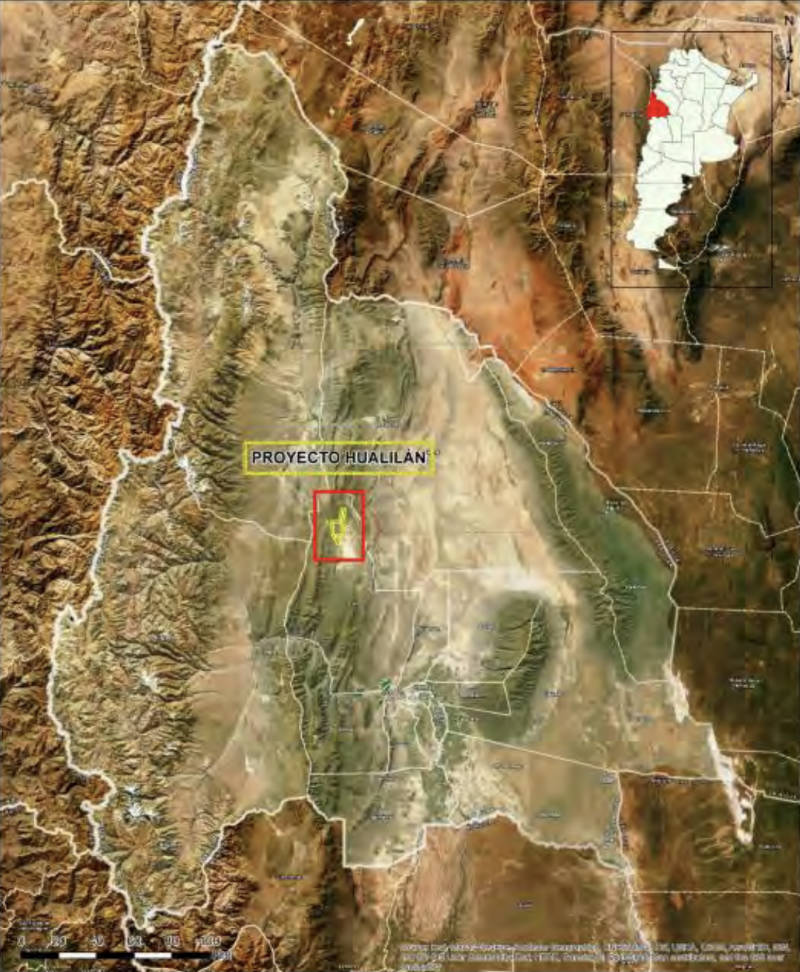Challenger Gold’s Hualilan is a true treasure with scoping study outlining low costs and attractive economics
Mining
Mining
Special Report: Strong cashflows, potential lowest quartile costs and rapid payback are just some of the standout features that a high-grade starter mine at the Hualilan gold project could deliver to Challenger Gold.
A new scoping study suggests the mining of a high core at the 2.8Moz Hualilan will rake in more than $1 billion in earnings over seven years.
A hefty 81% of that resource at the Argentine treasure trove is in the higher confidence indicated category, where drilling is close spaced enough to provide the certainty needed for mine planning.
This includes a high-grade core of 1.6Moz at 5 grams per tonne (g/t) gold equivalent (AuEq).
Challenger Gold (ASX:CEL) also has plenty of room to grow the resource, which remains open in most directions, as drilling outside the current resource estimate has yielded some very encouraging results.
Notable intersections outside the resource include:
Adding further interest, regional exploration has also indicated that there’s more gold to be found in the broader project land holding.
Rock chip sampling has returned (separate) high-grade assays of up to 26.9g/t gold and 1,785g/t silver in a series of old workings 2km north of Hualilan while stream sediment sampling about 10km to the northwest returned a top result of 54.4g/t gold and 151g/t silver.
The scoping study, which focuses exclusively on the high-grade core, has now delivered outstanding economics for a mine that will deliver annual production consisting of 116,000oz of gold, 440,000oz of silver and 9,175t of zinc (141,000oz AuEq).
This is forecast to deliver EBITDA of $1.1bn over the initial mine life of seven years while total pre-production capital is estimated at a relatively low $211.1m with payback in just 1.25 years.
CEL notes that this represents a low start-up project that can be funded even in current challenging market conditions.
Hualilan is also likely to be amongst the lowest cash cost quartile gold producers with all-in sustaining costs of US$830/oz ($1,291/oz).
Unsurprisingly, this delivers strong returns with pre-tax net present value (NPV) and internal rate of return (IRR) – both measures of profitability – estimated at $629m and 75% respectively.
Where it gets even more interesting is that the scoping study uses conservative price assumptions of US$1,750/oz gold and US$20/oz silver.
Should current spot prices be used instead, the NPV shoots up to $820m, which is a huge positive to say the least.

While attractive, the scoping study ignores the 1.7Moz AuEq remaining after the life of mine considered in its scope.
CEL says work is underway to evaluate heap leach processing and a larger open pit to capture this remaining resource.
Metallurgical testing is underway to evaluate options to recover this lower-grade mineralisation.
Other material opportunities to improve the scoping study findings include a low-grade zinc concentration pathway which could triple the recovered zinc and add up to an additional US$250m net revenue.
Potential processing of the gold-silver concentrate on site to produce gold and silver dore is also being considered as this could deliver additional revenue of over US$165m before costs.
The test work will also help the company determine if both conventional flotation and carbon-in-leach (CIL) processing will be evaluated in the next stage of studies.
It noted that while flotation delivered superior economics, the CIL case had a capex that is US$20m lower.
The company adds that while previous mine optimisation was done using US$1,700/oz and unit costs 10-20% higher than final costs, re-optimisation using a US$1,750/oz gold price and final costs is likely to see materially more ounces in the mine.
CEL is now awaiting final results for the column leach test, which will allow it to assess the viability of heap leaching as a potential processing pathway for low-grade mineralisation.
It will also complete additional flotation testing on the potential low-grade zinc concentration pathway and other tests including locked-cycle and variability test work required to provide sufficient data for the pre-feasibility study.
Additionally, the company will develop a detailed first principles open pit mining cost model, in collaboration with equipment vendors, to evaluate the potential owner-operated bulk mining efficiencies.
Other work includes completing geotechnical data gathering, updating underground stop optimisation for final underground mining and development cost forecasts, and additional drilling of targets identified in the regional exploration program.
This article was developed in collaboration with Challenger Gold, a Stockhead advertiser at the time of publishing.
This article does not constitute financial product advice. You should consider obtaining independent advice before making any financial decisions.